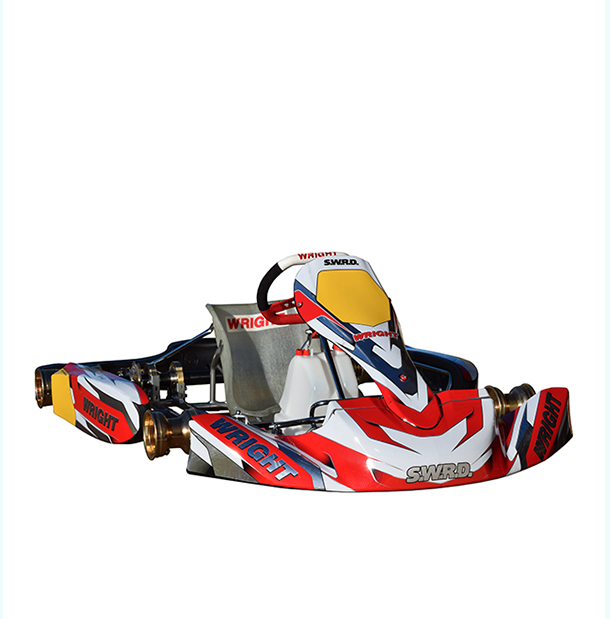Frequent Searches
Frequent Searches

 Exclusive Content
Exclusive Content

After the “Apollo” chassis (approved by the MSA for the Cadet categories), the selection of Wright Karts adds a new “divinity”: Jupiter. The name of the father of the all the gods hints that this is the top of the line, destined for all adult competitive categories and homologated by the CIK-FIA with the code 027-CH-02.
The frame is composed entirely of 30-mm-diameter, chrome moly steel tubes. The structure and curves are of the classic sort, with tubes that go from the rear axle to the front axle in a parallel and rectilinear fashion. The measures as well fall within the most widely utilized canons, with a wheel base equal to 1050 mm, a front track width of 730 mm and a rear track width of 640 mm. The axle has the typical diameter of 50 mm by a thickness of 2 mm and a length of 1040 mm.
Within the extensive Wright Karts line, ranging from chassis for the youngest drivers to those for competitive racing, and even rentable vehicles, the new Jupiter will take the place of the Suzuka 3, which will nonetheless remain in production.
The brake system, naturally CIK-homologated, is of the hydraulic variety and present only in the rear. It has a single-block design with a self-ventilated disk that’s 192 mm in diameter and 17 mm thick.
The rims and other components like the bearing housings and hubs are in the standard magnesium.
The removable bars are two, one front and one rear: in the first case the tube is round, in the second the bar is flat and rotatable.
The main goal in the design of the new chassis was to produce a vehicle that’s simple to adjust and to drive, and that adapts well to a wide variety of drivers, driving styles, circuits and track conditions. Without sacrificing performance.